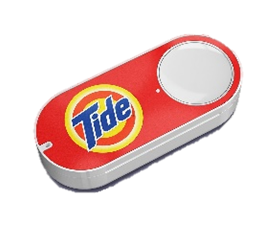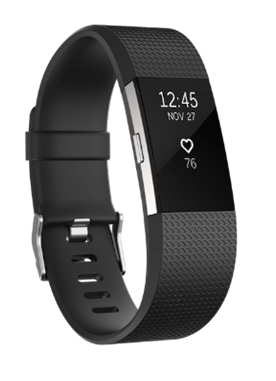#1 Best Selling Author - Profit in Plain Sight. AME Director-British Columbia, Canada www.AnneCGraham.com
Costly friction is everywhere in your business, at every stage of the value chain. On the shop floor, we see it as re-work and on-time issues. In the supply chain, we see it as poor-quality products and lost time required to resolve the problem.
 Friction is costly in soft dollars that you’ll never be able to track on the bottom line, it’s costly in hard dollars that are leaking out of your bottom line, and it’s costly in terms of competitive advantage as you’ll see in the case studies below.
Friction is costly in soft dollars that you’ll never be able to track on the bottom line, it’s costly in hard dollars that are leaking out of your bottom line, and it’s costly in terms of competitive advantage as you’ll see in the case studies below.
Customers love the path of least resistance because its frictionless – and whoever gets there first in your industry is going to dominate.
Let’s step away from the shop floor for just a moment and take a broader look at enterprise excellence across the value chain, with a few examples that will get you thinking:
1. Look for friction at the front end of the value chain:
I’ve been working with Bookings.com to plan a month-long trip to Spain this Spring. Many hotels have flexible change or cancellation policies right up to a week before. Many have a “pay at the hotel” policy so that there are no upfront expenses. Other hotels have a “no cancellation/pay now” approach. Which is more frictionless for the traveler? Which would you choose?
CASE STUDY #1 – First with frictionless wins: The Dash Button
 We talk about IoT (the Internet of things) in terms of connecting our manufacturing and supply chain processes more efficiency, but have you heard of the Dash Button? It’s still clumsy and inelegant vs. what’s yet to come, but it’s a powerful game changer for consumer goods and there are already thousands of them.
We talk about IoT (the Internet of things) in terms of connecting our manufacturing and supply chain processes more efficiency, but have you heard of the Dash Button? It’s still clumsy and inelegant vs. what’s yet to come, but it’s a powerful game changer for consumer goods and there are already thousands of them.
You put one of these small buttons for your favorite products in your laundry, kitchen, bathroom etc. and when you’re running short, simply push the button. One day later the product is delivered to your door by Amazon – frictionless.
If there’s a Tide button in your laundry, what chance do Woolite or Cheer have that you’ll see their ad on TV, in print, or on the web and be willing to add the friction of a trip to the store, standing in line to check out, and hauling it home? First with frictionless wins.
In your own value chain: How many policies, procedures, legalese, terms and conditions, and so on are actually making it difficult for your customers to buy from you? What is it costing you in back-and-forthing and lost business? What could you do to create a frictionless front-end experience for your customers? What could your suppliers do to create a frictionless front-end for you? Both will eliminate waste and costs that shouldn’t even be there.
2. Look for friction at the back end of the value chain:
Like you, I did some Christmas shopping with Amazon, and not all of it was a hit. Ordering is easy…but returns are still full of costly friction for the customer and for Amazon, who has thousands of employees just dealing with returns.
Sure, it’s easy to click “return” and get an immediate shipping label that you can print (much more friction-free than many other online options) but then there’s the friction of finding shipping materials, taking it over to the post office, paying for postage, waiting for the return confirmation by the vendor, and then contacting Amazon to receive a credit for the postage.No wonder gift cards are taking over – but they’re not nearly as much fun!
CASE STUDY #2 – Frictionless at the back end could eliminate massive waste
 I LOVE my Fitbit…and if I didn’t, the amount of friction I recently experienced at the back end of the value chain would have had me running for a competitor. The product was manufactured perfectly, but a design flaw put massive cost into their system that eliminated any margin they may have earned on the sale.
I LOVE my Fitbit…and if I didn’t, the amount of friction I recently experienced at the back end of the value chain would have had me running for a competitor. The product was manufactured perfectly, but a design flaw put massive cost into their system that eliminated any margin they may have earned on the sale.
Less than a month after buying a replacement Charge HR for one that fell apart after about 9 months, I experienced the exact same issue – the rubberized band separated from the face.
I experienced a frictionless WOW when I first contacted them. Instead of the usual “send us your bill to prove warranty” nonsense, they simply asked me to snap a photo of the damage with my smartphone, and they’d replace it no charge. Of course, they already knew when it had first gone into service, thanks to the IoT!
Without boring you with all of the gory details, I’ll just say that that simple replacement eventually required an exchange of 24 emails including the return of a wrong product before they actually got it right. When I speak to manufacturing groups, I actually bring the email trail in hard copy – it creates a massive AHA! Moment. Despite perfect production, Fitbit suffers from massive friction, massive costs that should never be there, and risks losing customers.
In your own value chain: You may not have the same volume of returns as Amazon, but take just a moment to consider your customer service department, and how much of their time is spent on fixing post-sale or post-delivery issues vs helping customers buy. How often do your customer service agents apply root-cause analysis to a problem like this one, vs simply going on to the next customer? Up to 83 percent of the typical customer service agent’s time is spent fixing – and that’s pure waste and friction for them and for your customers.
What’s the solution? I use a process I call “Staple Yourself to the Experience” that focuses beyond the shop floor to find hidden waste that you’re not seeing today. Simply track a customer transaction from start to finish and use your lean tools to look for waste, to streamline, and to create a frictionless customer experience at every stage of the value chain to achieve a higher level of enterprise excellence. You’ll earn customer loyalty, eliminate costs that shouldn’t even be there, and improve profitability by double-digits.


